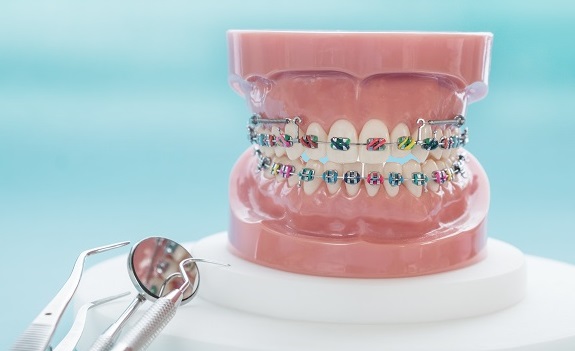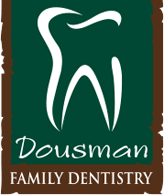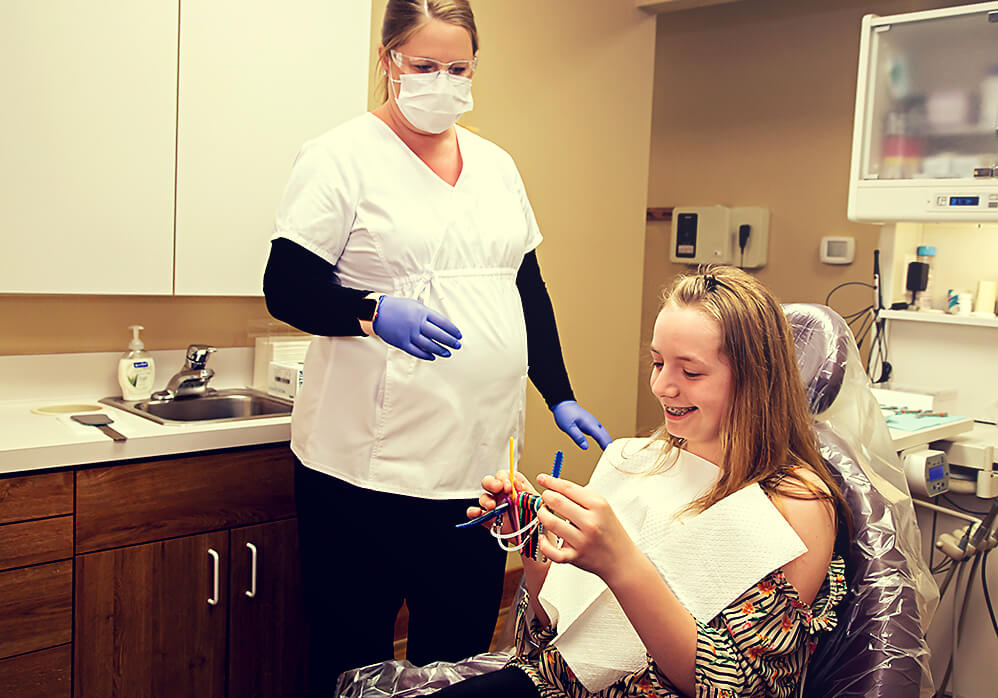Orthodontic Services for Waukesha County Patients
Dr. Whalen provides orthodontic treatment to our regular patients, ranging from simple interceptive treatments all the way to a full set of traditional braces, allowing you to receive this specialty dental care from doctors who already know you and your teeth.
When a patient has all of their adult teeth, Dr. Whalen can provide a complimentary orthodontic consultation to determine if there are spacing or bite problems that should be addressed through orthodontic treatment.
 Orthodontic Treatments Offered at Dousman Family Dentistry:
Orthodontic Treatments Offered at Dousman Family Dentistry:
- Braces to straighten teeth.
- Spacers to create or maintain room for incoming teeth.
- Palatal expanders to widen jaw arches while a patient is still growing.
- Appliances to manage jaw alignment and growth related to the teeth. 70% of orthodontic treatment in children corrects overbites/overjets due to an underdeveloped lower jaw.
- Removal of baby teeth, and sometimes permanent teeth if necessary.
- Appliances to break habits such as thumb sucking or tongue thrusting that are contributing to bite problems.
Orthodontist vs Dentist: What's the Difference?
While both orthodontists and dentists help patients improve oral health, dentistry is a broad specialty that deals with the teeth, gums, nerves, and jaw. Orthodontics is a specialty within dentistry with a focus on correcting alignment and bites and straightening teeth.
Braces for Teens in Waukesha County
At Dousman Family Dentistry, we understand that a confident smile is important for your teen. That’s why we offer a range of orthodontic solutions, from traditional metal braces to clear aligners, to fit your teen's lifestyle and your budget. Our experienced team is dedicated to creating personalized treatment plans that deliver beautiful, lasting results. We are conveniently located to serve families throughout Waukesha County. Schedule a free consultation today to learn more about our affordable braces and flexible payment options. Let us help your teen smile with confidence!
Types of Orthodontic Braces
Dental braces come in several different options. The kind of braces you can get will not only depend on what your dentist has to offer but on the shape of your teeth and mouth. Below are the kinds of orthodontic braces with their advantages and disadvantages explained.
-
Metal braces are the standard type of braces. Made of medical-grade stainless steel, they are still the most economical option on the market but have decreased in popularity because they are more noticeable and less comfortable than more recently developed orthodontic technologies. Metal braces are still incredibly effective at moving teeth.
-
Ceramic Braces (Clear Braces)
Ceramic braces are a less noticeable orthodontic option as the ceramic that attaches to the tooth is clear and blends in with the teeth. Ceramic braces provide the same amount of discomfort as regular metal braces. Since ceramic is a bit harder to install and more prone to breaking, ceramic braces are more expensive than regular braces.
-
Lingual Braces
Lingual braces are placed on the inner side of the tooth, making them a great option for adults or people who need to maintain a toothy smile. However, they require that each bracket be custom-made to fit the curve of the patient's tooth which significantly adds to the cost. Lingual brackets can also be difficult to install on small teeth and can cause discomfort, especially to the tongue. In some cases, speech may also be affected and the wearer will have to get used to the presence of the braces once they are installed before speech returns to normal.
-
Invisalign
Invisalign is the leading brand of invisible braces, a completely different alternative to orthodontic straightening. A clear plastic tray is made specifically to fit and gently push the wearer's teeth; new trays are made as the teeth move. Invisalign is the most comfortable orthodontic option because the tray is removed for brushing and eating, and it's trimmed to your gum line for optimal comfort. If you only need gentle adjustments to your teeth and cost is not an issue, Invisalign is an ideal orthodontic treatment. It can also straighten your teeth faster than traditional braces can. In as little as six months, you can see results with your smile. The biggest drawbacks to Invisalign are high cost, and aggressive adjustments are not possible without the pull from more traditional methods. The average cost of Invisalign can range from $4,000-$8,000 just like traditional ceramic braces.
Invisalign vs Braces
Sometimes it's tough to choose between Invisalign and braces based on what would work for your teeth, cost, and speed of treatment. It's important to look at the advantages and disadvantages of both before you decide what's right for you.
|
Invisalign: Advantages and Disadvantages
|
Braces: Advantages and Disadvantages
|
|
 They look better They look better
|
 They are suitable for all teeth They are suitable for all teeth
|
|
 You can take them out to eat You can take them out to eat
|
 You can achieve a perfect result You can achieve a perfect result
|
|
 You can take them out to brush and floss You can take them out to brush and floss
|
 You can choose from many types You can choose from many types
|
|
 There are fewer consultations There are fewer consultations
|
 It can be faster for tougher teeth It can be faster for tougher teeth
|
|
 They are more comfortable to wear They are more comfortable to wear
|
 They aren't the aesthetic choice They aren't the aesthetic choice
|
|
 You need to be disciplined You need to be disciplined
|
 Brushing and flossing can be difficult Brushing and flossing can be difficult
|
|
 Taking your aligner out can be inconvenient Taking your aligner out can be inconvenient
|
 Hard & sticky foods can dislodge parts of braces Hard & sticky foods can dislodge parts of braces
|
|
 Cost can be similar or more than braces Cost can be similar or more than braces
|
 More consultations are required More consultations are required
|


 Orthodontic Treatments Offered at Dousman Family Dentistry:
Orthodontic Treatments Offered at Dousman Family Dentistry:




